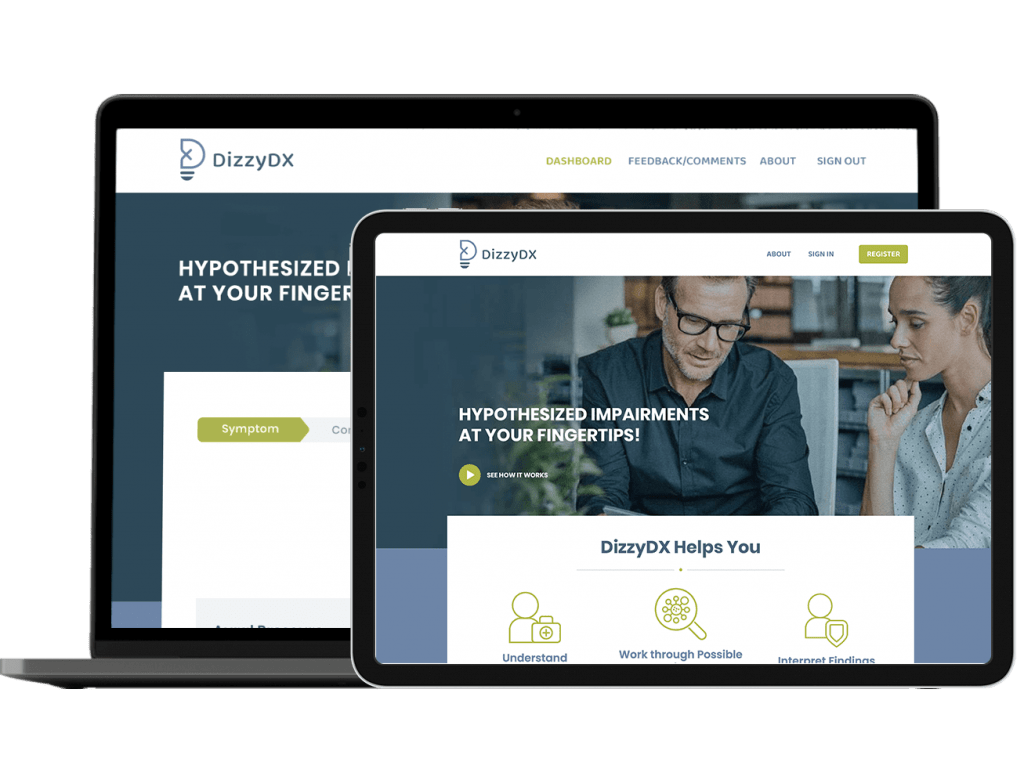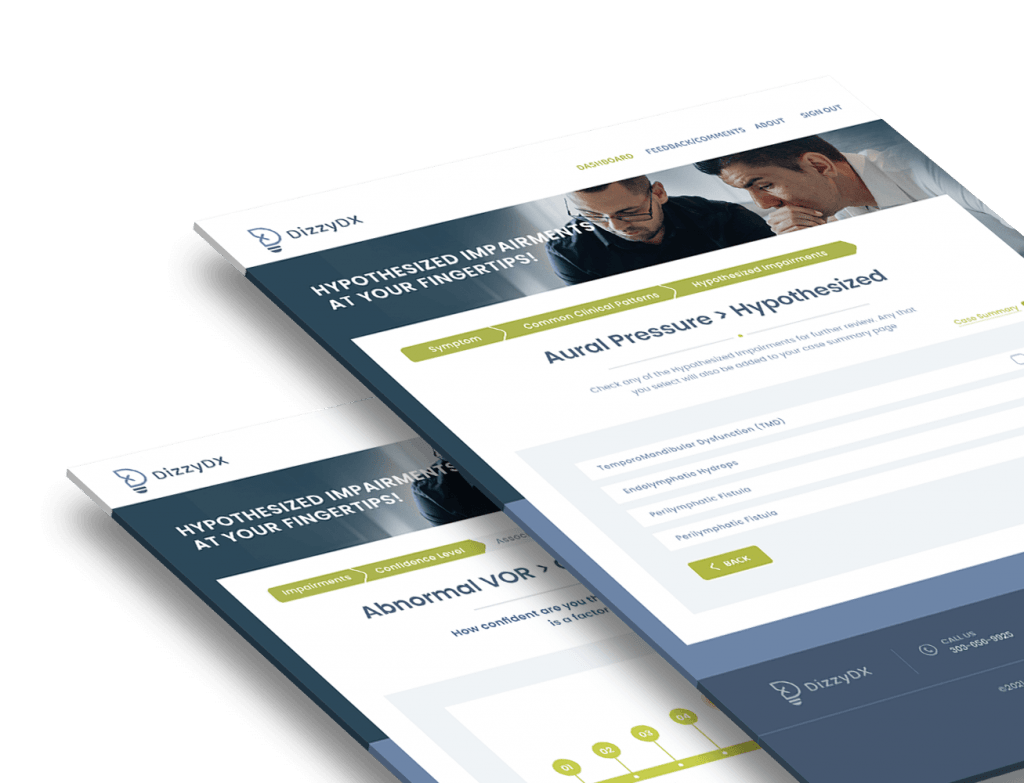
The Need
Dizziness is a common experience related to visual and auditory sensory conflict which tends to have very high outcomes for misdiagnoses. In order to provide better, evidence-informed care resulting in a higher probability of correct diagnoses, Epic’s client, Enhanced Clinical Insight conceptualized a first-of-its-kind, digital differential-diagnosis tool for doctors and clinicians who treat patients for this condition.
The Solution
Epic started with a very rudimentary WordPress website, that was previously created by the client, as an initial visual proof-of-concept. Taking that basic concept, Epic started by architecting a Ruby on Rails framework that could accommodate myriad permutations to arrive at an impairment diagnosis based on a series of patient-prompted questions and clinician-directed test results.
Epic then created an intuitive, front-end user-experience, where a clinician uses the web platform to step through a process that focuses broad-based critical thinking with astute, client/interview questions that generate better clinical testing and interpretations. The resulting diagnoses are based on a decision tree-based logic. In addition, throughout the user journey, alternative etiologies and medical considerations are highlighted, with supporting evidence provided.

Key Features
- From a user’s digital dashboard, a clinician can start their case from a path of known symptoms, or directly down a path of hypothesized impairments.
- The clinician’s user journey taps many different tables that Epic built within the DizzyDx database for presenting resources such as Definitions, Interview Prompts, Associated Symptoms and Impairments, Common Clinical Patterns, Early Flags for Referral, Supporting Evidence, and Test ‘How-to’ Videos.
- Users can assign, and update, a confidence score to their impairment hypothesis throughout their patient-diagnosing journey, as well as build a Case Summary with key decisions and notes that they make along the way.
- The DizzyDx platform maintains and updates the clinicians’ case files with every initial, and subsequent, step that they take along their digital journey. In this way, the clinician is able to better hypothesize what each patient’s impairment might be, as new information is allowed to build off of previous clues.